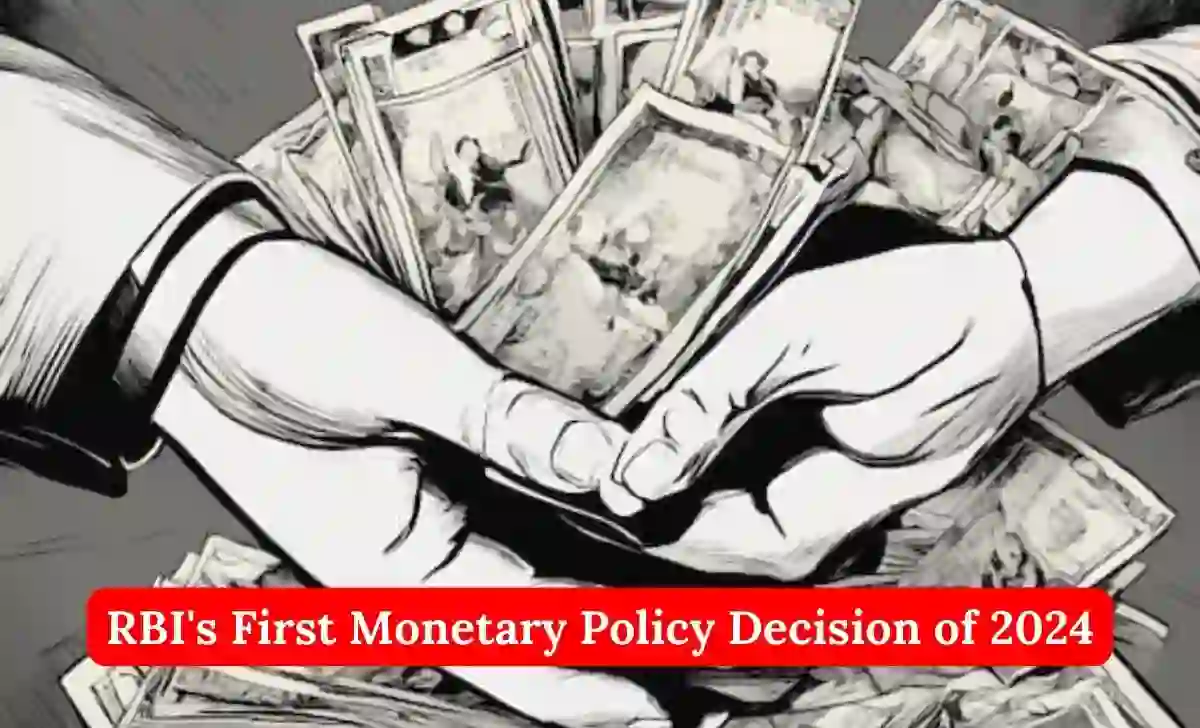RBI’s First Monetary Policy Decision of 2024: A Reflection on Stability and Progress
Discover the key highlights of RBI’s first Monetary Policy Decision of 2024, balancing inflation targets and growth objectives.
Reserve Bank of India (RBI) Governor Shaktikanta Das delivered its first Monetary Policy Statement of 2024 on February 8, 2024, outlining crucial decisions and strategies to navigate the economic landscape. Let’s delve into the key highlights and implications of this significant development.
Monetary Policy Decision:
The Monetary Policy Committee (MPC) opted to maintain the policy repo rate at 6.50%, aligning with efforts to manage inflation within the 4% target range while supporting growth. This decision reflects strong domestic economic activity and moderate inflation primarily attributed to food prices.
Global Economic Landscape:
Amidst global conflicts and uncertainties, the global economic landscape remains mixed, with signs of stability emerging. India’s economy, however, has shown resilience, buoyed by improved infrastructure, digital technology, and robust regulatory policies.
Economic Outlook:
India’s GDP growth for 2023-24 is estimated at 7.3%, marking the third consecutive year of growth above 7%. Various sectors, including agriculture, manufacturing, and services, are contributing to this momentum, with investment activity gaining traction supported by government expenditure and policy initiatives.
Also Read:
- Minutes of the Monetary Policy: February 6-8, 2024
- RBI: Financial Transparency in Loan Disclosure
- RBI’s Monetary Policy Stance?
- Will There Be a Rate Cut?
Inflation Dynamics:
Headline inflation has moderated, averaging 5.5% during April-December 2023, with core inflation reaching a four-year low of 3.8% in December. The trajectory of inflation hinges on factors such as food prices, weather conditions, geopolitical tensions, and seasonal price corrections.
Monetary Policy Stance:
Maintaining a cautious and balanced stance, the RBI continues to prioritize interest rates as the principal tool of monetary policy, aiming to bring inflation back to the 4.0% target. Flexibility in liquidity management remains paramount to ensure orderly money market rates and financial stability.
Financial Sector Resilience:
The domestic financial system remains robust, with healthy balance sheets of banks and financial institutions. Emphasis is placed on governance, risk management, compliance culture, and customer protection to uphold safety and stability.
External Sector Dynamics:
India’s current account deficit has significantly decreased to 1.0% of GDP in Q2 2023-24, with services and remittances maintaining a surplus. India’s foreign exchange reserves stand strong at US$622.5 billion as of February 2, 2024, reflecting resilience in the external sector.
Additional Measures:
The RBI announced several measures aimed at enhancing regulatory frameworks, facilitating hedging mechanisms, and strengthening payment systems to promote transparency, efficiency, and security in financial transactions.
Liquidity Management:
Effective liquidity management is crucial for maintaining financial stability. Governor Das elaborated on the RBI’s strategies to manage liquidity conditions efficiently. These measures aim to ensure the smooth transmission of monetary policy and support the functioning of financial markets.
Forward Guidance in Monetary Policy Statement
Providing forward guidance is essential for market participants to gauge the future direction of monetary policy. Governor Das hinted at the RBI’s stance on future policy actions, emphasizing a data-driven approach and flexibility to respond to evolving economic dynamics.
Conclusion:
The Monetary Policy Statement by RBI Governor Shaktikanta Das reflects a balanced approach aimed at fostering economic stability and growth. While maintaining the status quo on interest rates, the central bank remains proactive in addressing inflationary pressures and supporting economic recovery. Market participants and stakeholders will closely monitor developments in the coming months as the economy navigates through challenges and opportunities.
As India confidently progresses on a transformative growth trajectory, the RBI reaffirms its commitment to reducing inflation to the target of 4% while ensuring price and financial stability. Continuous vigilance and holistic policy approaches will be instrumental in sustaining higher growth and stability.
In summary, the first Monetary Policy Statement or Monetary Policy Decision of 2024 reflects the RBI’s unwavering dedication to fostering economic stability and progress, laying the groundwork for a prosperous future.
RBI’s First Monetary Policy Decision of 2024: A Reflection on Stability and Progress Read More »









